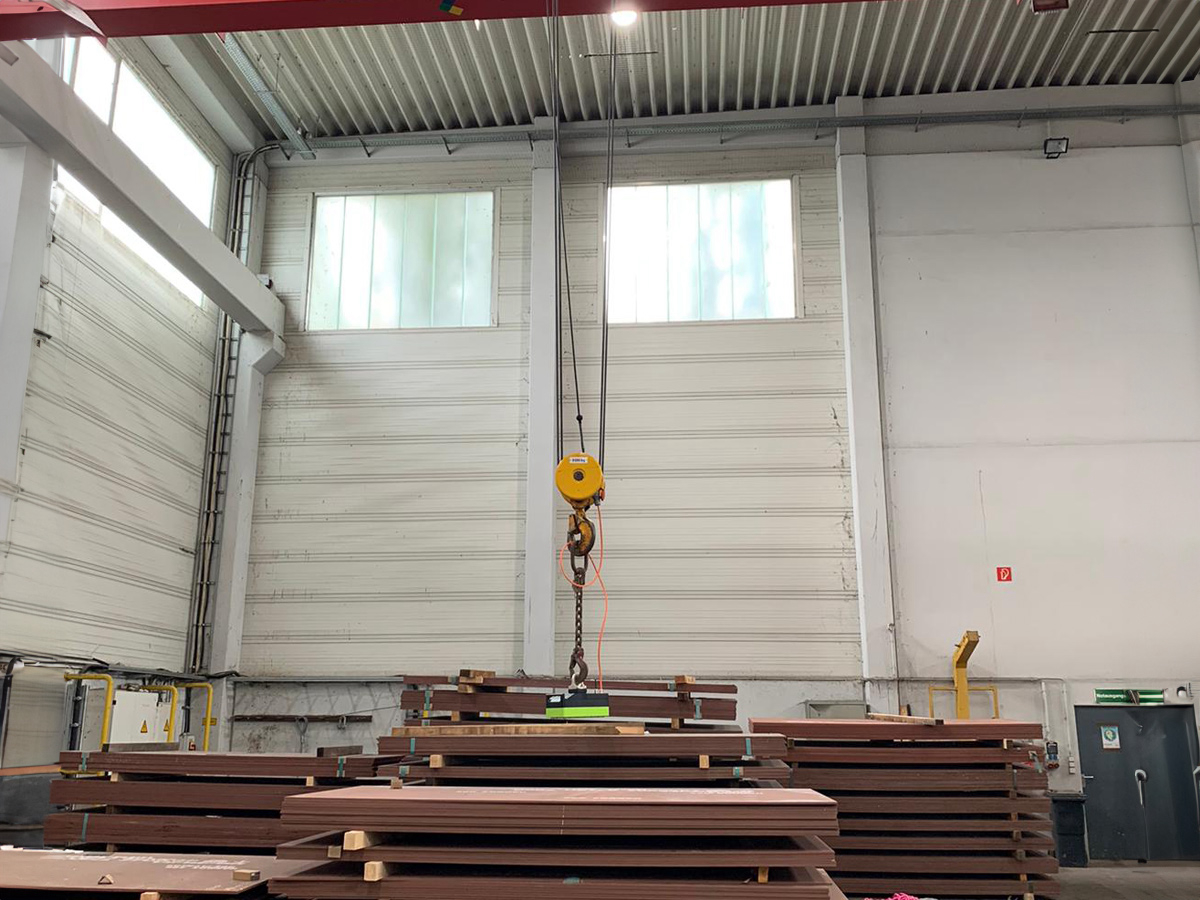In the steel industry, various methods are employed to lift and secure steel sheets, but they all share a common challenge: the sharp edges of the sheets. Without the correct protective measures—such as edge protectors, sleeves, or coatings—these sharp edges can cause serious damage to lifting equipment. In the worst-case scenario, this can result in the load slipping or falling, posing a severe safety risk to personnel.
To prevent such hazards, steel traders commonly rely on textile lifting gear like round slings or lifting straps. These are typically used alongside protective accessories such as edge guards or coated sleeves. Others prefer using sheet metal clamps, purpose-built grippers, or even traditional lifting chains. However, chains also present a risk of cuts and abrasions from exposed edges unless additional protection, like edge guards or reinforced hoses, is applied.
Unfortunately, installing protective gear can make the lifting process cumbersome and time-intensive. Magnetic edge guards offer some relief but still require manual attachment and ample working space. Even with coated chains, flexibility is reduced due to increased stiffness.
The optimal solution is a lifting method that eliminates the need to wrap slings around the load altogether—specifically, one that allows steel sheets to be lifted from above. This not only simplifies handling but significantly improves safety and efficiency in environments dealing with sharp-edged steel materials.
When used in conjunction with an overhead crane, an electric lifting magnet offers an efficient and reliable method for lifting steel sheets or sheet bundles. In a recent customer application, the connection between the crane hook and the suspension eye of the electromagnet was made using a single-strand lifting chain. The power supply for the magnet was securely mounted to the hook block on the crane.
The system is controlled via a wireless remote control, allowing the operator to manage the lifting process from a safe distance. This remote functionality significantly enhances operator safety and convenience.
This magnetic lifting method provides several key advantages: it ensures a safe, time-efficient, and surface-friendly handling of steel materials. By lifting from above, the need for complex rigging or edge protection is eliminated, making it an ideal solution for steel stockholders, fabricators, and manufacturers aiming to streamline their material handling operations while prioritising safety and sheet integrity.



Steel sheets are lifted from above with an electropermanent magnet by connecting the magnet to the crane hook via a sling. This eliminates the need for time-consuming slinging with a lifting sling, which must be attached to the load by hand and wrapped around it during each lifting process. The sling must be secured to prevent it from slipping. In addition, the sling must always be adapted to the load with regard to its dimensions (load capacity). The maximum spreading angle must also be observed during the lifting process.
Steel sheets can also be attached in the following ways: